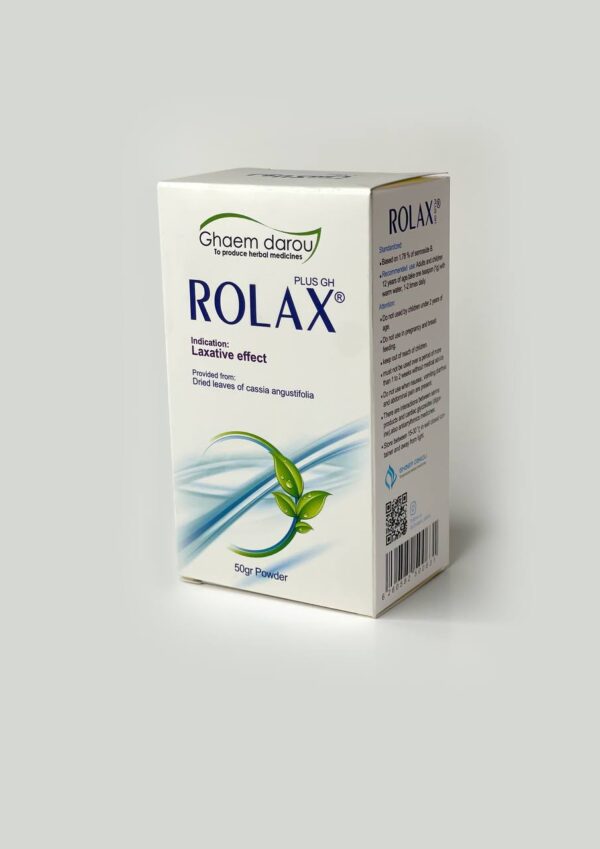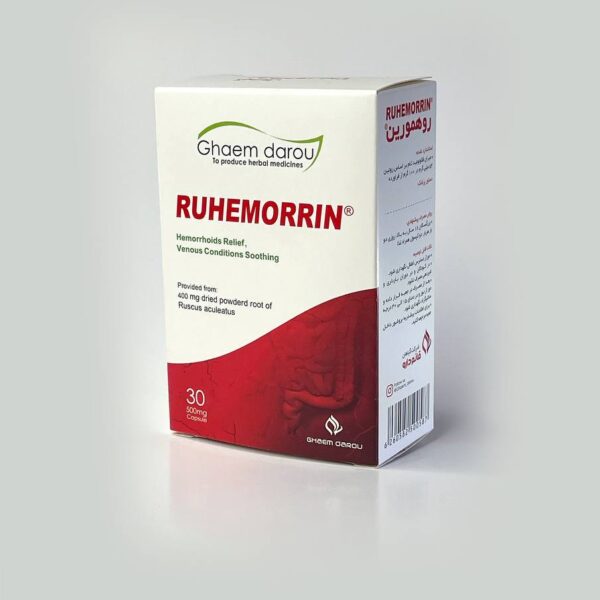Rolax Plus GH Powder
Packaging Rolax Plus:
A 50-gram sachet Rolax Plus accompanied by a brochure, packed in a cardboard box.
Botanical Ingredient Rolax Plus:
Cassia Leaves with the scientific name Cassia angustifolia.
Product Components Rolax Plus:
A 50-gram powder of Cassia Leaves, standardized to a minimum of 6.2% w/w sennosides B.
Intended Uses Rolax Plus:
Cassia has laxative and mild stimulant effects and is utilized in the treatment of constipation.
Pharmacological Effects Rolax Plus:
Cassia leaves belong to the category of stimulant laxatives. The anthraquinone glycosides in Cassia are hydrolyzed and converted into active anthraquinones after digestion. This process involves the absorption of a portion of anthraquinone glycosides from the small intestine, which is then hydrolyzed in the liver, resulting in the secretion of active anthraquinones into the colon. It is possible that some of the anthraquinone glycosides not absorbed at this stage are hydrolyzed by bacterial enzymes in the colon, producing active anthraquinones.
Overall, the laxative effect primarily takes place in the colon, primarily stimulating the myenteric plexus through active anthraquinones, leading to increased colonic motility and stool movement. These laxatives take effect orally 6 to 12 hours after administration. Free anthraquinones are circulated in the blood, excreted by the kidneys, and can cause a change in the color of urine. These compounds are also secreted in breast milk, saliva, and bile.
Usage Instructions [1]:
For adults, take one teaspoon (equivalent to one gram of the powder, approximately containing 17 milligrams of sennosides B) one or two times daily, mixed in a small amount of warm water.
Contraindications and Recommended Notes [1,2]:
- Do not use this medication in case of hypersensitivity to the drug, nausea, vomiting, or other symptoms of appendicitis, acute abdominal surgery, intestinal obstruction due to fecal impaction, other obstructive conditions, and undiagnosed abdominal pain.
- Pregnancy and Breastfeeding: Cassia falls under Category C and should not be used during pregnancy. Additionally, due to the secretion of anthraquinone derivatives in breast milk, it should not be consumed while breastfeeding.
- Children under two years of age should not use cassia. Children aged 2 to 12 should follow a physician’s instructions.
- In elderly individuals, the prescribed dosage of the product is typically half of the usual dose.
- Laxative products should not be used for more than one to two weeks without a physician’s prescription.
- If you are using sedatives or tranquilizers, consult your doctor before using this product.
Drug Interactions [1]:
This product may interact with cardiac glycosides such as digoxin, antiarrhythmic drugs, estrogen, indomethacin, nifedipine, potassium-depleting diuretics like furosemide and hydrochlorothiazide, and corticosteroids.
Side Effects [1]:
- Cassia may cause mild stomach discomfort such as colic or cramps. Prolonged or excessive use can lead to diarrhea accompanied by loss of water and electrolytes, especially potassium.
- Long-term and excessive use (lasting one year or more) has been associated with rare reports of cardiac arrhythmias, nephropathy, edema, bone demineralization, finger clubbing, colonic laxative dependency, hypokalemia, melanotic colonic mucosal pigmentation, and muscle weakness.
Storage Conditions:
Store away from light and moisture at a temperature of 15 to 30 degrees Celsius
Sources:
- PDR for herbal medicines,4th edition, published by: Medical Economics Company, Inc. at Montvale.P: 684-688
- Iranian Herbal Pharmacopoeia , Pages: 455-446

 Kidney and urinary tract
Kidney and urinary tract Digestion
Digestion glands
glands Ear nose and throat
Ear nose and throat Enhance sexual power
Enhance sexual power Fitness
Fitness Safety and health
Safety and health Women
Women Cardiovascular
Cardiovascular

